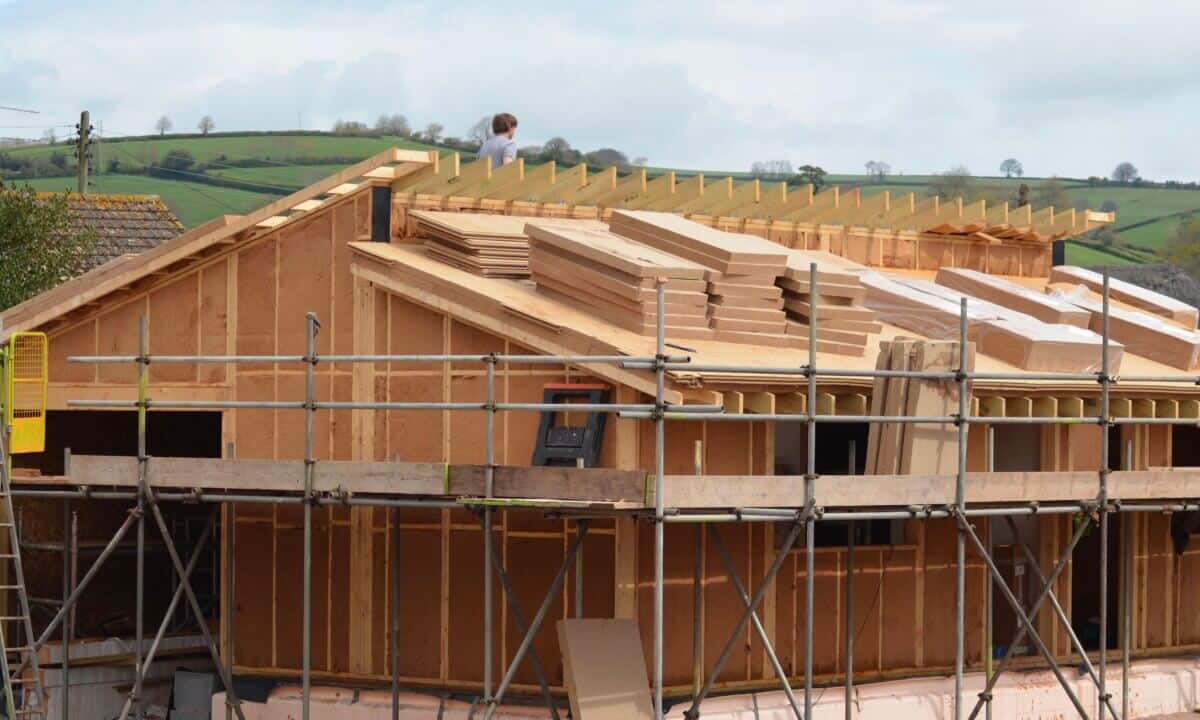SPECIFICATION GENERATOR
Find out which low impact materials are right for your building project.
Wood fibre insulation – The Myths
We sometimes hear from architects that would really like to incorporate natural fibre insulation into their projects but struggle to convey the benefits of wood fibre insulation to their clients. So, we have put together this short article on what the benefits are and to address some of the concerns about wood fibre insulation.

In this time of the climate emergency, wood fibre insulation is a very pragmatic and functional material to use instead of synthetic materials. It offers simpler, more effective installation procedures and solutions that meet, and often exceed, their target performance.
Can wood fibre save more carbon than other insulations?
Being plant based, wood removes carbon dioxide from the atmosphere as it grows, helping to reduce carbon emissions rather than adding to them. By using wood fibre insulation, you effectively start reducing your carbon emissions even before the materials are installed.
Energy intensive synthetic insulants can take well over a year before the carbon reduction they provide off-sets the carbon emissions produced in their manufacture. This further delays the beneficial impact of any insulation measures.
Doesn’t wood fibre burn?
Whilst wood fibre insulation will burn in an intense fire, it does so very slowly, predictably and without the formation of deadly gasses such as Cyanide or Hydrogen Chloride. This ensures that should a fire occur within a home, the occupants can easily escape.
In combination with other materials, it can offer very high fire resistance in excess of 60 minutes at over 1000C, surpassing all the latest requirements for building control fire regulations.
What happens if wood fibre gets wet?
As in a tree, wood fibres transport moisture very quickly, they can disperse water very effectively and so if they do get wet, they dry out fast. This makes it idea for insulating all types of masonry buildings, both internally and externally.
Used in modern timber constructions, it speeds up the drying of structural timber and it’s flexible nature prevents gaps from forming as timber shrinks or dries. By preventing these voids and the heat loss they allow, ensuring the performance targets are met.
In historic timber, wood fibre insulation keeps the timber dry and prevents accumulation of moisture and therefore decay. This makes it one of the best materials to use for building renovation.
Don’t all insulations keep buildings cool?
Any insulation will keep you warm in winter, you simply just need enough of it. However, keeping the heat out in summer is much more of a challenge and requires insulation with a specific set of properties. Insulation that can slow, not just reduce, heat movement from outside to in creates the coolest and most comfortable spaces, reducing the risk of overheating the most.
This property is called decrement delay and is a measure of the time taken for heat to reach the interior of a building where is starts raising internal temperatures. Of all the insulation types with a similar U-value, wood fibre insulation has the longest decrement delay, meaning it can delay heat transfer into buildings and keep them cool more than any other.
Is it expensive?
Wood fibre insulation will cost a little more than other types of insulation. However, because the design and installation can be so much simpler, the built cost is often no more and sometimes less. Additionally, it will reduce maintenance and improve the longevity of the buildings in which it is used, making it cheaper in the long term.
Natural Fibre Insulation | The Myths
Check out this clip from the 2023 Natural Fibre Insulation Summit, where Chris talks in detail about the common myths when it comes to natural fibre insulation including wood fibre.
If you have any questions about the use of wood fibre insulation in your building project, please contact us for your free Project Consultation.
